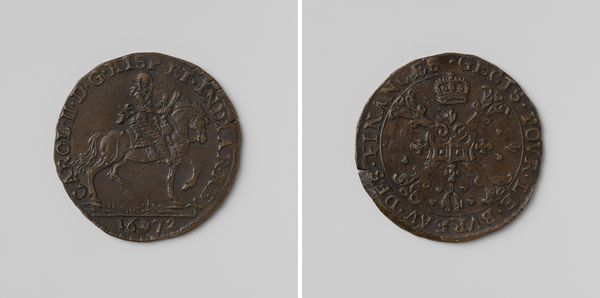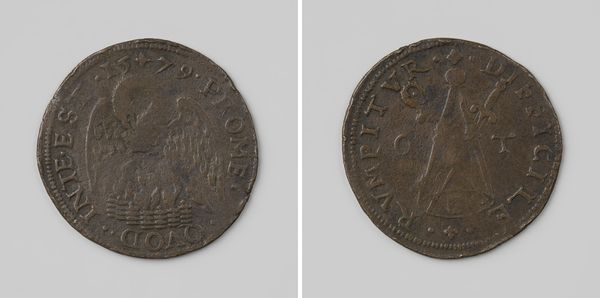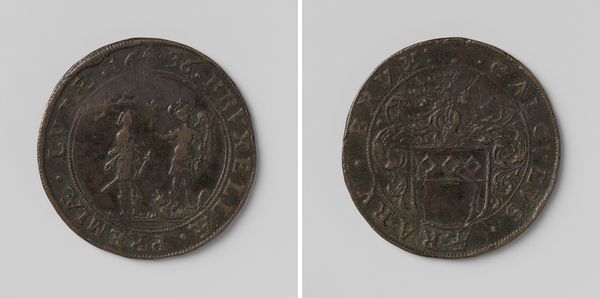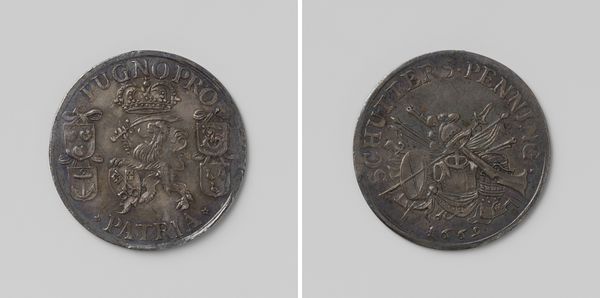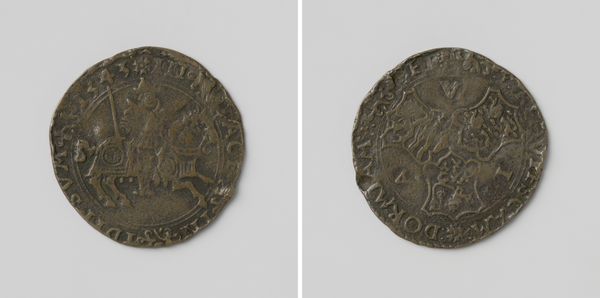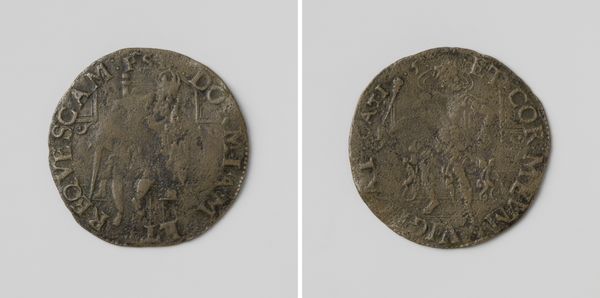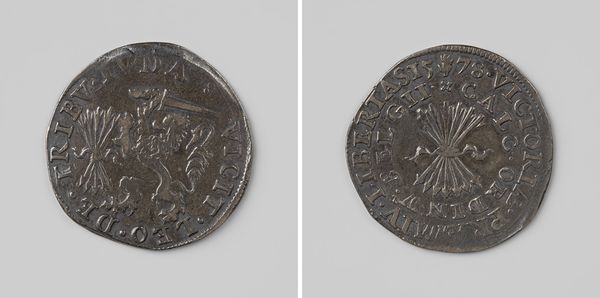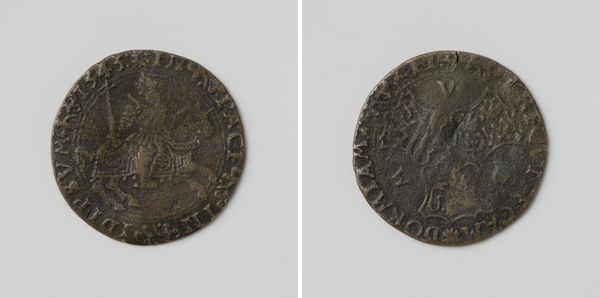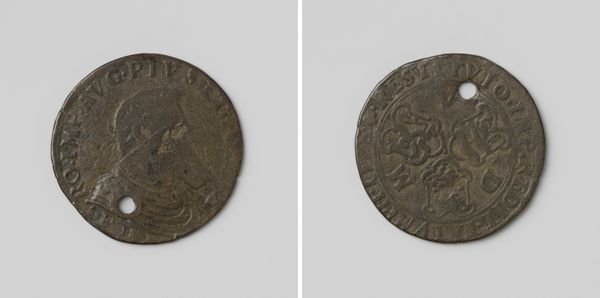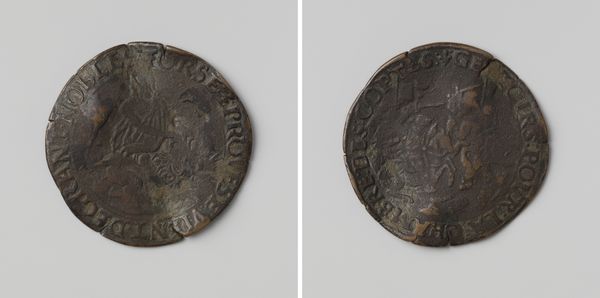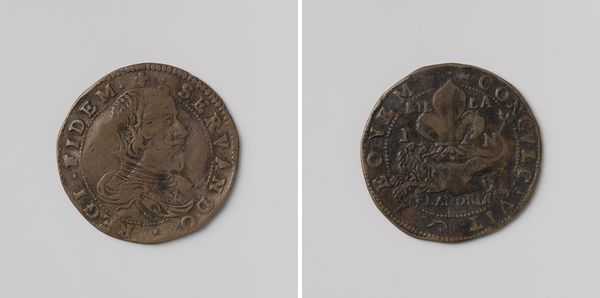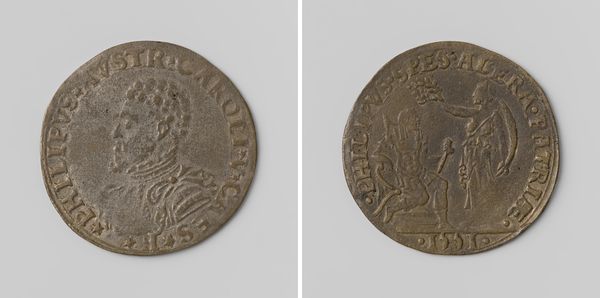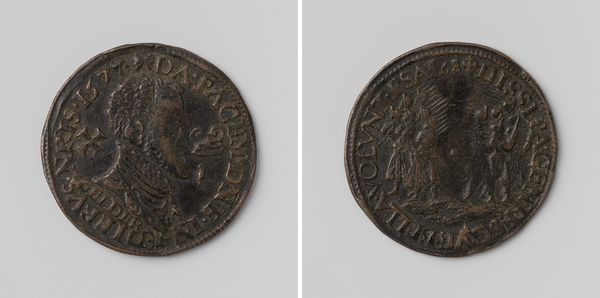
Albrecht en Isabella van Oostenrijk, rekenpenning geslagen op last van de stad Brussel 1601
0:00
0:00
relief, bronze, sculpture
#
portrait
#
medieval
#
sculpture
#
relief
#
bronze
#
sculpture
#
carved
Dimensions: diameter 2.8 cm, weight 4.83 gr
Copyright: Rijks Museum: Open Domain
Curator: This bronze relief is a striking example of early 17th-century commemorative art. Made in 1601, this piece is titled "Albrecht en Isabella van Oostenrijk, rekenpenning geslagen op last van de stad Brussel," currently held in the Rijksmuseum collection. Editor: My first impression is that the worn texture adds such depth; it feels like I'm holding a piece of history. It is really small. I wonder who produced it and what purpose the little object served. Curator: As the title suggests, this medal was commissioned by the city of Brussels. Such medals, also used as reckoning counters, played a significant role in cementing the power of rulers through imagery intended for a broad public. Editor: Absolutely, it would circulate widely as a constant visual reminder of authority. Look at how tactile the bronze is; one can almost imagine the artisan meticulously carving the die. It reminds me how the laborious process becomes intrinsically linked with ideas of craft. Curator: Yes, and this medal demonstrates how visual communication was strategically employed during the Habsburg reign. These objects celebrated political alliances and key events for propaganda purposes. The portrayal of Albrecht and Isabella was intended to project their power to inspire loyalty within the Habsburg territories. Editor: I also wonder about the value of the metal used and who would possess and use such piece. Who would own it and for what purposes? Did they even comprehend the image and appreciate the process that created it? Curator: Those are interesting thoughts to consider. Looking closer, the classical style—evident in the laurel wreaths and idealized portraits—lends legitimacy to their rule. It connects them to a long lineage of powerful leaders, projecting an image of stability and continuity. Editor: So, in a way, this object encapsulates the nexus of art, labor, and political messaging during a transformational period. The medal makes one ponder how artistic and political statements continue influencing cultural attitudes today through the social economy. Curator: Precisely. This piece serves as a potent reminder of how art could—and continues to—operate as a tool for shaping public opinion and reinforcing political structures. Editor: Examining this "Albrecht en Isabella" piece highlights the inherent relationship between art, social discourse, and also production. It enriches my grasp on history.
Comments
No comments
Be the first to comment and join the conversation on the ultimate creative platform.
